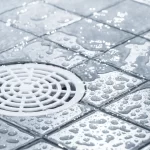Water usage in Toronto can seem quite complicated. Oftentimes, people will open the water bill for their Toronto home and simply not understand how they’ve consumed so much water. In most cases, the amount of water is simply higher than you think, but that doesn’t mean there are easy ways to save water. As experienced Toronto plumbers, we’re quite aware of this situation.
Here are some frequently asked questions about water usage in the average Toronto home, and some tips on how to make your home more water efficient.
1. How does the City calculate water usage?
The City of Toronto calculates water usage for homes and residential buildings using automatic water meters. These meters measure water consumption in cubic meters and are typically installed in basements. The meters are equipped with a small wire transmitter that sends water usage data directly to the City, eliminating the need for manual meter readings. This automated system streamlines the data collection process, making it more efficient and cost-effective compared to traditional meter reading methods used by some power companies.
Residents can still check their water usage manually by reading the meter, but the automated system ensures accurate and timely data reporting to the City, which is used for billing and monitoring purposes.
2. What’s the average water usage for a Toronto home?
The big four appliances and fixtures in terms of water usage are toilets, water heaters, washers and dishwashers, and sinks. Some experts estimate that toilets alone account for almost a quarter of all water usage in a home. Read below for ideas on how to curb your water usage.
4. Are there some things I can do to decrease my water usage?
Absolutely. Water conservation is the best way to save money on your monthly water bill outside of fixing any leaks in the system. Here are just a few ways you can conserve water:
- Switch to water efficient appliances, including eco-friendly toilets, water heaters, washers, and dishwashers. As your largest water consumers, you can save noticeable amounts of money every year through these simple changes.
- Employ a “if it’s yellow, let it mellow” toilet policy, flushing only after number twos or two number ones in a row.
- Install aerators in your sinks. Besides offering more pressure, the latest aerators can actually cut sink water usage by up to 40%.
- Take short showers and save long baths for special occasions.
- Keep water in the fridge. This will save you from letting the tap run to get cold water.
- Only put full loads in your laundry machine and washing machine. This saves money and makes waiting for clean clothes and dishes less time-consuming.
- Have your home’s plumbing inspected by a trained and certified plumber once every two to three years. This will help you spot minor issues in your plumbing system before they become major, more expensive problems. Plus, they can spot any leaks or inefficiencies, and recommend ways for your home to become more water efficient.
- In the summer, use a watering can instead of a hose for watering the garden. Hoses use a lot of water and can displace soil, but a watering can is more efficient and more gentle on your plants and surrounding dirt.
- Water your garden in the early morning or late afternoon to avoid evaporation and make your watering more efficient.
- Collect water from your drainpipe and use that to water your garden. Rainfall is, in effect, “free” water, so why not use that instead of paying for the water from the hose (which you then put into a watering can).
5. Is there a simple way to see if I have a leak?
Yes. Your City of Toronto automatic water meter comes equipped with a simple way to see if your plumbing system has a leak. Simply choose a time during the day when there won’t be a demand on water, such as during the middle of the afternoon or late at night (if you live alone, you don’t want someone going for a nighttime bathroom stop and discover the water’s been turned off). Then, turn off all indoor and outdoor faucets and look at the meter. If the small red triangle on the meter continues to spin, then you may have a leak in your system as watr is still flowing.
6. How can I get leaks fixed?
Fixing any and all potential leaks in your home’s plumbing system isn’t only necessary for keeping your water bills low, it’s also a way to conserve the environment. To get any and all leaks filled, you must first contact a trained and certified plumber to inspect your home plumbing system. After a thorough inspection, your plumber will be able to determine if there is indeed a leak and specifically where it is coming from. In some cases leaks are hard to find if they are underground, but luckily we are versed in underground water leak detection.
After they’ve determined the location of the leak, they can either fix the problem on-site or recommend the repairs needed to fix the issue. In most instances, leaks are caused by loose connections or spigots that are gradually leaking water, all of which can be fixed in the same day. If the problem is more complicated, the costs can vary, but a certified plumber can advise you on the best course of action, both financially and for the good of your home.
Saving water is an excellent way to save money and time, all while giving the environment a little break. While we all need water on a daily basis, the key to understanding how to save water, and thus money, is to understand how water usage is measured and collected in Toronto. Armed with the right information, and using the services of a professional and certified plumber, you can help the environment and save a little money along the way.






